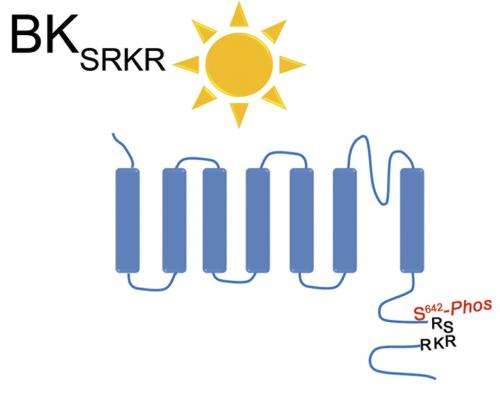Controlling our circadian rhythms

Most people have experienced the effects of circadian-rhythm disruption, after traveling across time zones or adjusting to a new schedule. To have any hope of modulating our biological "clocks," to combat jet lag or cope with alternating shifts, we need to first understand the physiology at play. A new study in The Journal of General Physiology helps explain some of the biophysical processes underlying regulation of circadian rhythms.
BK ("Big Potassium") channels, which are activated during nerve impulses and can reduce neuronal excitability, affect a variety of physiological functions. One of the channel's most intriguing roles is to regulate the frequency of nerve impulses conducted by the SCN, a structure located in the brain that acts as a master clock to synchronize circadian rhythms throughout the body. During the nighttime, SCN neurons are less active than during the day, consistent with the increase in SCN BK channel abundance that occurs at night. During the day, however, BK channels have little effect on neuron excitability in the SCN, even though one might expect the increase in neuronal firing rate to increase BK activation.
In a new study, Andrea Meredith and colleagues from the University of Maryland School of Medicine show that, in addition to the reduction in overall number of BK channels present in the SCN during the day, decreased channel activity might also depend on an increase in the prevalence of a channel variant containing a four-amino acid chain (SRKR). The researchers demonstrated that stimuli comparable to spontaneous daytime firing elicited a diminished response from the SRKR variant compared with a different BK variant.
The findings provide new evidence about how BK channels modulate SCN activity, solving one more piece of the puzzle of complexities surrounding circadian rhythm regulation.
More information:
Shelley, C., et al. 2013. J. Gen. Physiol. DOI: 10.1085/jgp.201311072
Plant, L.D. 2013. J. Gen. Physiol. DOI: 10.1085/jgp.201311128

















